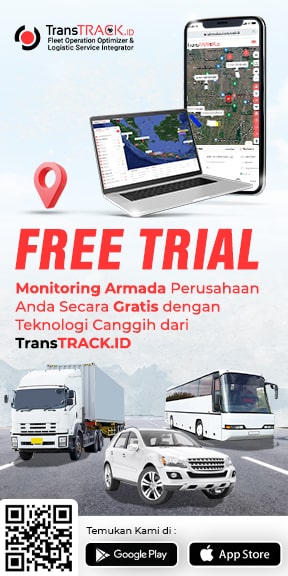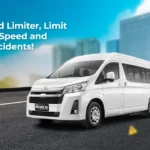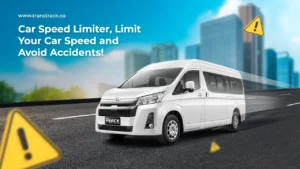Blind Spot Truck, How to Deal With It?
Posted on December 14, 2023 by Nur Wachda Mihmidati

A Truck Blind Spot is a point around a truck where the driver cannot detect the presence of other objects or vehicles. In other words, if there is another vehicle coming from the area, it will be more prone to a collision because the visibility of the vehicle is limited.
If you’re a frequent driver, you’ve probably heard of blind spots, which are often mentioned when discussing the causes of accidents. Blind spots are considered one of the causes of driver accidents because they cannot see the presence of objects or other vehicles.
TransTRACK emphasizes the importance of knowing Blind Spot for both truck drivers and other traffic participants. We support safe cargo transportation and comfortable driving by using a wide range of products from TransTRACK itself.
Vehicle blind spot area
As mentioned earlier, a blind spot is an area that is not in the driver’s line of sight. Each vehicle has a different blind spot depending on its type. Generally, the larger the size of the vehicle, the wider the blind spot area it has.
The blind spot area of a truck is an accident-prone area, because in that area the driver cannot detect the presence and arrival of other vehicles. So, to minimize the risk of accidents, knowledge of blind spots is quite important. Here are some examples of truck blind spots that you can be aware of:
- The rear right or left side of the truck when on a two-lane road, especially for trucks that have thick pillars so that visibility to the rear right and left is increasingly limited.
- The rear of the vehicle when making a turn. When there are motorcycles in this area, it is one of the most common causes of collisions.
- Precisely the back of the truck, especially for trucks with closed rear glass, such as box trucks, dump trucks and so on.
- Pedestrians who appear during traffic jams. They usually slip between vehicles so as not to be seen by the driver.
- Motorcyclists maneuvering from behind into the lane in front of the truck. This can also sometimes go unnoticed by truck drivers, so you need to be careful, especially when driving in traffic.
How to Drive Around a Truck Blind Spot
While many assume truck drivers have a better view of the road because they are higher off the ground and have larger mirrors, trucks actually have a larger Blind Spot.
Staying in a Truck’s Blind Spot means the truck driver cannot see you or your vehicle, posing a huge safety risk and potentially causing a serious accident. Learn where the Blind Spot spots are, give the truck plenty of room, and pass promptly to keep you and the drivers around you safe.
Staying Conscious
1. Keep away from the sides of the truck.
Increased truck size means larger blind spots, so it is important to know where these blind spots are. The sections of lane on either side of the truck, especially on the sides, are invisible to the truck driver and therefore very dangerous for other trucks to pass.
- If you must pass through this area to pass a truck, be careful and pass as quickly as safety allows. Signal early and let the driver see you before you pass.
2. Make sure you can see the driver in the truck’s side mirrors.
If you can’t see the driver in the side mirrors, chances are they can’t see you either. Not being able to see the driver in the side mirror indicates you are in a Blind Spot and should exit that position as soon as it is safe to do so.
3. Pay attention to signals.
When driving behind a truck, you cannot see what is happening ahead and must rely on signals from the truck driver in front of you. Stay alert and pay close attention to the truck’s turn signals and brake lights so you can be prepared to stop or turn with advance notice.
4. Be patient.
Having a patient mindset can be just as important as staying aware of blind spots. Remember that trucks can’t maneuver as easily as small trucks, which is especially important in an emergency. Use caution when driving a truck to help keep yourself and everyone around you safe.
- Avoid honking (except in emergency situations), aggressive driving, and weaving through traffic, as this can impair concentration and ultimately lead to an accident.
[display-post-read-also]
When Driving in Front and Behind a Truck
1. Give enough space when in front.
Trucks cannot stop as quickly as trucks or motorcycles, so it is very important when driving in front of a truck to leave plenty of room for the truck driver if they have to stop. If you can see the truck’s headlights in your rearview mirror, you are outside the front Blind Spot and a safe distance ahead of the truck.
2. Avoid tailgating.
The large size of trucks means that truck drivers don’t have rearview mirrors and have to rely on their side mirrors to see the truck behind them. Driving behind trucks also means you cannot see what is happening in front of them. Stay out of the restricted zone directly behind the truck and give the truck plenty of room to slow down or stop.
- You should leave about 20-25 truck lengths, or four seconds, between you and the truck in front of you.
- As often as possible, try to keep both side mirrors of the truck visible in front of you. This allows the truck driver to see you and be aware of you as well.
- In bad weather conditions, leave more space between you and the truck.
3. Give the truck extra room when turning.
Trucks sometimes need to swing wide to turn, taking up additional lanes, so be careful if you are next to or behind a turning truck.
- Give the truck plenty of room.
- Do not cut between the truck and the curb, and be aware that trucks cannot slow down as quickly as smaller vehicles.
When Overtaking a Truck
1. Signal early.
Overtaking a truck means you have to pass the blind spot, no matter how short. Show the driver that you want to pass as early as possible so that they have enough time to see you and prepare themselves to do so.
2. Do not linger in the Blind Spot.
Overtake as quickly as possible and do not linger in one of the Truck’s Blind Spots longer than necessary. This area is the most dangerous place for you if the truck driver loses control, tries to change lanes, or has an accident.
3. Give yourself room to overtake.
You should be at least two truck lengths in front of the truck before rejoining the same lane. This ensures that you stay out of the truck’s front Blind Spot and helps you avoid clipping the truck.
4. Do not slow down.
After merging back into your lane in front of the truck, maintain your passing speed and slow down only when you have a safe distance between you and the truck.
Other Safety Tips
- Never walk behind or drive around a truck that is backing up or preparing to back up. The driver will not be able to see you, potentially causing a fatal accident.
- Never cut in front of a truck that is slowing to a stop.
- Never underestimate the size and speed of an approaching truck. Large prime movers often appear to be moving at slower speeds due to their size. Many collisions involving passenger vehicles and large trucks occur at intersections, when the driver of the passenger vehicle is unaware of how close or how fast the truck is traveling.
Truck blind spots are something that every road user should be aware of when driving. For this reason, the need for cameras in the blind spot area will be very helpful for truck users and other drivers. You can use Fleet Management System with all its features that will help you with driving safety!
Recent Post
Topic :
 Bahasa Indonesia
Bahasa Indonesia









